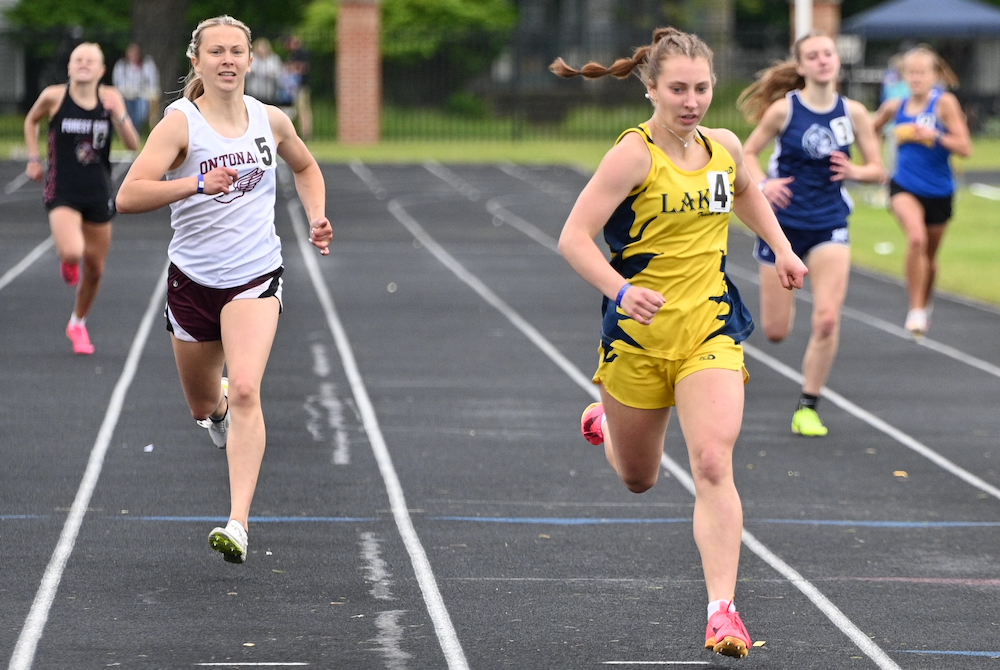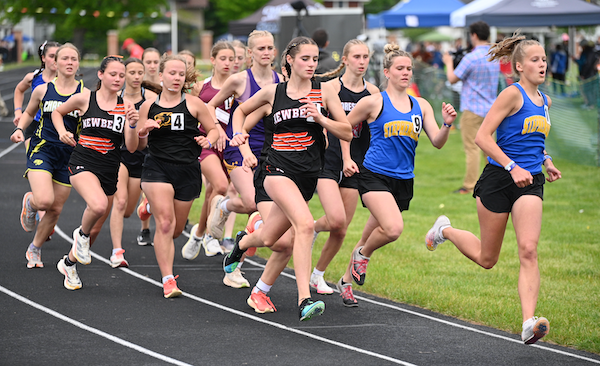
Casting Lines for Future Tournaments
August 12, 2016
By Jack Roberts
MHSAA Executive Director
The MHSAA is best known to the public for the tournaments it conducts to conclude the fall, winter and spring seasons each school year.
These tournaments, the first and largest program of the MHSAA, have survived the Vietnam War, the Korean conflict and two World Wars. They have survived the technology bubble, the housing collapse, the energy crisis and the Great Depression.
MHSAA tournaments existed at the dawn of aviation and at the time of our nation’s lunar landing. Popes, presidents and governors have changed and changed again and again, and MHSAA tournaments roll on year after year.
But the sense of tradition and permanence and inevitability of MHSAA tournaments doesn’t dissuade us from asking questions about our tournaments, even some of the most basic questions. Here are two.
Question #1
I have long been and will always be an advocate for a Ryder Cup format for the MHSAA Golf Finals, and a team tennis approach to the MHSAA Tennis Finals; but 90 years of tradition is hard to overcome. Might this be a more exciting format? Could it be co-ed? Could it reverse the decline in boys tennis participation, and increase girls golf participation? Wouldn’t it be fun to try?
Periodically, the International Olympic Committee requires each of the designated Olympic sports to defend its status, to state its case why the sport should remain a part of the Olympic program. Then, after a series or votes that retain one sport at a time, the IOC drops the sport that makes the weakest case. It does so to make room for one of the previously unlisted sports that makes the best case for inclusion.
This would appear to keep the existing Olympic sports on their toes, and to keep the Olympic movement fresh and reflective of modern trends in sports.
While I would not enjoy the controversy, I can see the potential for some positive results if the MHSAA were to invoke the same policy for determining the 14 tournaments it will provide for girls and the 14 for boys.
This might cause us to consider more deeply what a high school sport should look like, or at least what an MHSAA tournament sport should stand for.
On the one hand, we might be inclined to drop tournaments for those sports that involve mostly non-faculty coaches and non-school venues, or require cooperative programs to generate enough participants to support a team, or resort almost entirely to non-school funding, or cater to individuals more than teams.
Or perhaps this process would cause policymakers to forget traditional thinking and ask: “In this day and age, should we shake off traditional notions of sport and consider more where modern kids are coming from?” That might mean fewer team sports and more individual sports, more “extreme” sports like snowboarding and skateboarding, and more lifetime sports, meaning not just golf and tennis and running sports, but also fishing and even shooting sports.
Currently, MHSAA policy states that the MHSAA will consider sponsorship of a tournament series for any sport which 64 member schools conduct on an interscholastic basis as a result of action by the governing boards of those schools.
Should the only question be how many schools sponsor a sport, or must an activity also have certain qualities and/or avoid certain “defects?” What should an MHSAA tournament sport look like and stand for?
Question #2
Bristling from criticism that his association is a money-grabbing exploiter of children, my counterpart in another state said, “If we were running our programs just to make money, we would do very many things very differently.” I knew exactly what he meant.
Because we care about the health and welfare of students, because we mean what we say that the athletic program needs to maximize the ways it enhances the school experience while minimizing academic conflicts, and because we try to model our claim that no sport is a minor sport when it comes to its potential to teach young people life lessons, we operate our programs in ways that make promoters, marketers and business entrepreneurs laugh, cry or cringe.
If money were the only object, we would seed and select sites to assure the teams that attracted the most spectators had the best chance to advance in our tournaments, regardless of the travel for any team or its fan base. If money were the only object, we would never schedule two tournaments to overlap and compete for public attention, much less tolerate three or four overlapping events. If money were the only object, we would allow signage like NASCAR events and promotions like minor league baseball games.
Those approaches to event sponsorship may not be all wrong; they’re just not all right for us. And we will live with the consequences of our belief system.
During a typical school year, more than 20 percent of the MHSAA’s 2,097 District, Regional and Final tournaments lose money. Not a single site in golf, skiing or tennis makes a single penny. In no sport did every District, Regional and Final site have revenue in excess of direct expenses.
In fact, in only three sports – boys and girls basketball and football – is revenue so much greater than direct expenses overall that it helps to pay for all the other tournaments in which the MHSAA invests.
That’s right: invests. When we present our budget to our board, we talk about the MHSAA’s investment in providing tournament opportunities in all those sports and all those places that cannot sustain the cost of those events on their own. How much is this investment worth to students, schools and society?
These two are core questions that require our focus far in advance of talk about scheduling, site selection, seeding and the myriad matters that too often hijack our time and attention.

Jokela Stars Again, Lake Linden-Hubbell Reigns This Time as Outright Champ
By
John Vrancic
Special for MHSAA.com
June 2, 2024
KINGSFORD — Lake Linden-Hubbell junior Emily Jokela had quite a workout here Saturday and has three individual victories to show for it.
The Lakes also benefitted from her effort as they earned the Upper Peninsula Division 3 track & field team championship.
LL-H, which shared the title with Stephenson a year ago, scored 72 points this time. Newberry edged Stephenson 64-62 for the runner-up trophy.
“Our Regional has been tough since 2016,” Lakes’ coach Gary Guisfredi said. “Since that time, teams from our Regional have won the U.P. Finals eight times. Emily scored 38 points alone today. Our shot putter (sophomore Maddy Dudenas) taking third and our girl (sophomore Cleo Milkey) taking fourth in long jump were big points. We knew Newberry and Stephenson were going to be tough.”
Jokela opened with a victory in the 100-meter dash in 13.04 seconds. Later, she set UPD3 Finals records in back-to-back races, taking the 400 (58.61) and 300 hurdles (44.8) prior to placing second in the 200 (27.03).
“My starts were better than usual,” she said. “Those (open 400 and 300 hurdles) are tough races, but you just got to push through that. You always try to prepare for that in practice. I just try to beat everybody to the next hurdle.”
Her effort in the 400 topped the old mark (58.7) by Superior Central’s Lauren Spranger in 2011, and in the hurdles she bested her own record (45.63) from a year ago.
The Lakes, who finished undefeated this year, also won the 800 relay at 1:52.52.
 “I think our handoffs were good,” senior Rebecca Lyons said. “It feels great to be U.P. champions. We were really excited about this meet. We knew Newberry and Stephenson were pretty good.”
“I think our handoffs were good,” senior Rebecca Lyons said. “It feels great to be U.P. champions. We were really excited about this meet. We knew Newberry and Stephenson were pretty good.”
Dollar Bay got a first on sophomore Kiera Isaacson’s leap of 5-3 in high jump.
Newberry, coming off a solid cross country season from last fall, showed its strength in the distances. Sophomore Samantha Taylor set the meet record in the 1,600 (5:14.9), topping the previous best (5:17.2) by Amy Kerst of Munising in 2011. She was followed by freshman Abby Taylor (5:22.7), Stephenson sophomore Faith Cappaert (5:36.7) and Newberry senior Kaylen Clark (5:37.49), who will run at Davenport University this fall.
Clark added a first in the 3,200 (12:33.7), withstanding a challenge from North Dickinson’s Mya Grunlund (12:43.65).
“I knew I had my kick and had to use it today,” Clark said. “I just wanted to defend my title one more time. I think my conditioning from cross country helped me. I missed three meets because of bronchitis. Once I got over that, I did a lot of slow miles. It was a struggle.
“I’ll get to run against Lola (Korpi) again in college. I’m real excited about that. It will also be exciting to do something new.”
Newberry also overcame a slow start to win the 3,200 relay (10:24.16).
“We weren’t too worried,” Abby Taylor said after anchoring that relay. “We knew Kaylen and Sam would close it. I felt pretty relaxed and confident in the final leg.”
Cappaert won the 800 (2:25.91), followed by Abby Taylor (2:33.34) and Clark (2:35.52), and senior Kayela Putnam added a first for the Eagles in pole vault (10-0).
Fourth-place Carney-Nadeau got the bulk of its points in the field events where senior Samantha Kedsch set a meet and school record in long jump at 16-11. Her effort also topped the previous best jump of 16-7½ by Ontonagon’s Olivia Suomis in 2012.
Junior teammate Mariska Laurila won discus with a school-record throw of 114-1 and added a first in shot put (33-1¼), with senior Kelsie Smith taking second (32-5).
Big Bay de Noc got a first from Destiny Bleau, who was clocked at 26.73 in the 200.
PHOTOS (Top) Lake Linden-Hubbell's Emily Jokela sets a meet record in the 400 with a winning time of 58.61 on Saturday. (Middle) Stephenson's Faith Cappaert (11) takes the lead and doesn't relinquish it while winning the 800. (Click for more from Cara Kamps/RunMichigan.com.)

